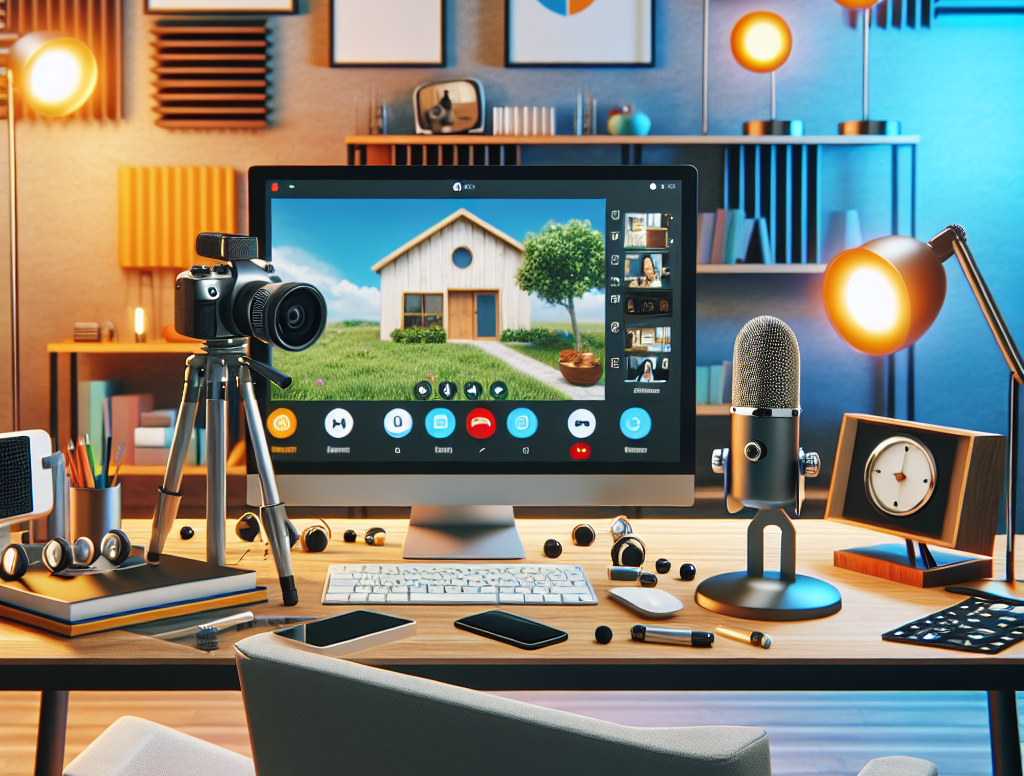How to Improve Your Video Conference Quality

In an era when remote work and virtual gatherings are woven into our daily routines, the quality of your video conferences can make or break your productivity and connection with others. Whether you’re pitching to clients, collaborating with teammates, or simply catching up with friends and family, clear audio, crisp video, and seamless interaction keep everyone engaged and focused. This article dives deep into the technical tweaks and human-centric practices that transform jittery, pixelated calls into smooth, professional experiences.
1. Optimize Your Environment
A polished video feed starts before you even launch your conferencing software. Crafting the right environment sets the stage for success.
1.1 Lighting
- Position your primary light source (a window or lamp) behind your camera so your face is evenly illuminated.
- Use a three-point lighting setup—key light (brightest), fill light (softens shadows), and backlight (separates you from the background)—for a studio-grade look.
1.2 Background
- Choose a clean, uncluttered backdrop. A plain wall, tasteful bookshelf, or subtle company branding conveys professionalism.
- If privacy is a concern, invest in a collapsible green screen and use your conferencing app’s virtual-background feature.
1.3 Acoustics
- Hard surfaces bounce sound, causing echoes. Introduce soft furnishings—rugs, curtains, fabric-backed chairs—to absorb excess noise.
- For persistent echo, consider portable acoustic panels placed behind you or on side walls.
2. Upgrade Your Gear
While built-in laptops and headsets can be serviceable, a few targeted upgrades can dramatically elevate clarity and presence.
2.1 Camera Choices
- 1080p USB webcams deliver a clear, professional image for most use cases.
- DSLRs or mirrorless cameras with HDMI capture cards offer cinematic sharpness—ideal for presentations and high-stakes meetings.
2.2 Microphone Options
Your voice is your most critical asset. The right mic makes it sound rich, natural, and background-noise-resistant.
| Type | Pros | Cons | Approx. Price |
|---|---|---|---|
| USB Condenser | Plug-and-play, clear vocals | Picks up more room noise | $50–$150 |
| XLR Dynamic | Rejects ambient noise, durable | Requires audio interface | $100–$300 |
| Lavalier (Clip-On) | Hands-free, discreet | Limited frequency range | $30–$100 |
2.3 Headphones vs. Speakers
- Closed-back headphones prevent echo and feedback loops.
- Bone-conduction headsets keep ears open to your environment, balancing awareness with call clarity.
3. Master Your Software Settings
Even premium gear underperforms if configured incorrectly. Dive into your conferencing app’s advanced settings.
Resolution & Frame Rate:
- For casual chats, 720p at 30 fps suffices.
- For presentations or demos, bump to 1080p; consider 60 fps for smooth motion.
Bandwidth Management:
- If your network fluctuates, enable “low-bandwidth” or “data saver” mode to prioritize audio over video, avoiding choppy speech.
- Lock your output resolution to prevent auto-downscaling that may introduce artifacts.
Background Blur & Virtual Backgrounds:
- Blur reduces visual distractions but can tax your CPU/GPU.
- Pristine virtual backgrounds require solid green screens and even lighting to avoid jittery cutouts.
Noise Suppression & Echo Cancellation:
- Modern clients like Zoom, Teams, and Google Meet come with integrated AI filters.
- Tweak aggressiveness: too much noise reduction can make speech sound “underwater.”
4. Elevate Your Connectivity
A flawless local setup cannot compensate for an erratic internet connection. Ensure your data streams swift and steady.
4.1 Wired vs. Wireless
- Whenever possible, plug directly into your router using a CAT 5e or CAT 6 Ethernet cable.
- If Wi-Fi is your only option, position yourself near the router and connect to a 5 GHz network to avoid congestion.
4.2 Quality of Service (QoS)
- Access your router’s admin panel and prioritize video-conferencing ports or device MAC addresses.
- This prevents other applications (e.g., downloads or streaming) from hogging bandwidth mid-meeting.
4.3 Redundancy Strategies
- Keep a smartphone tethered via USB as a backup uplink.
- For mission-critical calls, consider a secondary Internet Service Provider (ISP) on a separate network.
5. Polish Your On-Camera Presence
High-tech optimizations only go so far if your body language or framing distracts participants. Cultivate an authentic, engaging presence.
5.1 Eye Contact & Framing
- Raise your camera to eye level using stacks of books or a laptop stand.
- Position your head so it fills the top two-thirds of the frame, leaving minimal empty space above.
5.2 Body Language
- Sit up straight, lean in slightly when you talk, and use hand gestures sparingly to underscore points.
- Nod or smile to signal active listening, keeping others engaged.
5.3 Attire & Color Psychology
- Solid, mid-tone colors (e.g., blues, greens) translate well on camera.
- Avoid busy patterns or bright whites that can confuse auto-exposure algorithms.
6. Engage and Collaborate Effectively
Video technology is only a vessel for communication. Leverage features that foster interaction and idea-sharing.
Interactive Tools:
- Built-in whiteboards, polling, and annotation features turn passive viewers into active participants.
- Encourage attendees to draw, vote, or co-edit shared documents in real time.
Breakout Rooms:
- For large groups, splitting into smaller teams ensures every voice is heard.
- Assign facilitators and timekeepers to keep discussions focused.
Chat & Reactions:
- Designate a “chat moderator” to surface questions and feedback without interrupting speakers.
- Use emojis or thumbs-up icons to maintain energy without constant verbal interruptions.
Agenda & Time Management:
- Circulate a clear agenda ahead of time.
- Use a visible timer (or integrated countdown feature) to respect everyone’s schedule.
Conclusion
Mastering video conference quality marries technical precision with genuine human connection. By refining your environment, investing wisely in gear, fine-tuning software settings, fortifying your network, and polishing your on-camera presence, you’ll send a signal that you value clarity, professionalism, and collaboration. And as you integrate interactive tools and best practices, you’ll transform every virtual gathering into a dynamic, engaging forum.





